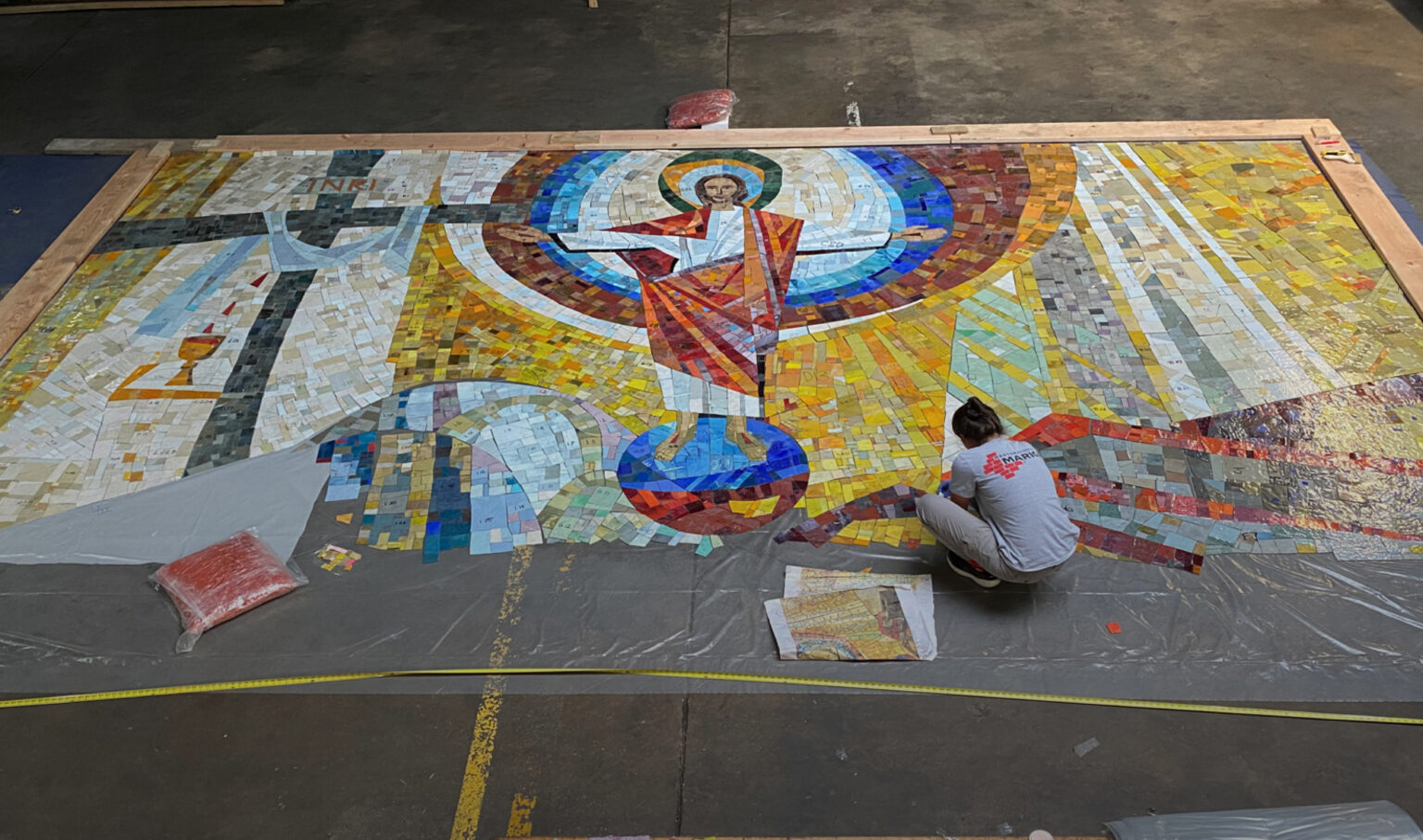
Mosaic is a captivating form of decorative composite art that showcases intricate designs using small individual pieces of stone, glass, or ceramic. This art form has a rich history tracing back to ancient civilizations, notably the Greeks and Romans, who significantly advanced the craft. Mosaics are not just historical artifacts but are also contemporary masterpieces that beautifully blend tradition with modern aesthetics. In the context of historic restoration, mosaic art plays a crucial role in preserving the aesthetic and cultural integrity of heritage sites.
Creating a mosaic involves meticulously arranging tiny, colored materials like stone, glass, or ceramic. Each piece contributes to an overall pattern or image, intricately held together by plaster or mortar. The versatility of this artform is evident in its application, with mosaics adorning floors, walls, and ceilings. The diversity of mosaic types, ranging from simplistic geometric patterns to complex figurative depictions, reveals the depth and adaptability of this artistic practice.
Mosaic plays a significant role in the architectural landscape of the United States, especially in the realm of historic preservation. In cities like Chicago, mosaics are a cornerstone of cultural expression with stunning examples like the Chicago Cultural Center’s Preston Bradley Hall, where the walls are adorned with vibrant glass tesserae that celebrate the city’s rich history. Mosaic flooring, a common element in the restoration of historic buildings, often features durable and elegant materials such as marble and granite. These exquisite floors are highlighted in the grand hallways of New York’s public libraries, imbuing them with a sense of grandeur, and in San Francisco, where they grace the entryways of Victorian-era homes, adding a touch of historic elegance.
Wall mosaics also tell stories of the past, particularly in New York’s subway stations, where they serve as a canvas for urban tales and historical narratives. In Washington D.C. the National Building Museum showcases ceiling mosaics, offering a glimpse into the architectural heritage of the nation. Even in furniture, mosaics find their place as seen in the elegant homes of Boston’s Beacon Hill, where mosaic inlays blend functionality with artistic flair. The widespread use of mosaics in these restorative endeavors not only emphasizes their artistic and historical importance but also highlights their continuing relevance in preserving America’s architectural legacy.
The preservation and restoration of mosaics, an exquisite form of composite art, is critical in maintaining their historical significance and visual appeal. Regular maintenance, including annual inspections, is essential to assess the condition of the mosaic, with particular focus on the grout which plays a crucial role in holding the intricate patterns of stone, glass, or ceramic pieces together. Historic mosaic restoration, however, is a complex and delicate task, necessitating the expertise of a skilled contractor with experience in this specific field.
The restoration process begins with a thorough assessment of the mosaic’s condition, identifying any damage or wear. This initial step often involves cleaning the mosaic to remove accumulated dirt and debris, thus providing a clearer view of any repair needs. Following this, the restoration work commences, involving meticulously removing damaged or missing pieces and replacing them with new ones that seamlessly match the original mosaic in design, color, and texture. This painstaking process ensures that the restoration respects the mosaic’s historical integrity and aesthetic value. The final step involves a careful cleaning and polishing of the mosaic, which not only restores its original shine and luster but also helps protect it from future damage. This comprehensive approach to mosaic restoration not only preserves these beautiful artworks for future generations but also revives their historical essence and artistic beauty. Examples of successful mosaic restoration can be seen in our mosaic project portfolio.
Recognizing and addressing damage in mosaic is essential for their preservation and restoration. Various types of damage can occur, including cracks, missing pieces, discoloration, and sometimes more serious structural issues that may necessitate partial or even complete removal of the mosaic for repair.
Structural cracks are particularly concerning as they can indicate underlying issues with the building’s foundation or structure. These cracks are more than just surface-level and can jeopardize the integrity of the mosaic. Missing pieces and discoloration, while perhaps less structurally significant, are still critical signs of wear and must be addressed to prevent further deterioration.
The first step of a successful mosaic restoration is choosing a reputable and experienced contractor to ensure that the mosaic’s historical and aesthetic values are preserved for future generations.
When choosing a contractor for your mosaic restoration project, there are several key qualities to look for. First and foremost, the contractor should have extensive experience in restoring historic mosaics and should be able to provide references from previous clients. They should also have a deep understanding of the materials and techniques used in mosaic restoration and be able to explain the restoration process in detail. Additionally, the contractor should have access to the necessary tools and equipment to complete the restoration process effectively and efficiently.
To choose the right contractor, do your research and ask for recommendations from trusted sources. You will also want to ask the contractor for a detailed estimate of the cost and timeline for the restoration project. It is important to work with a contractor who is transparent about their pricing and timeline and who is willing to communicate with you throughout the restoration process. By choosing the right contractor for your project, you can ensure that your historic mosaic is restored to its original beauty and preserved for future generations to enjoy.